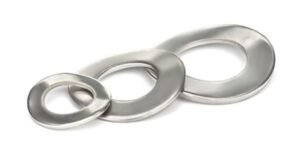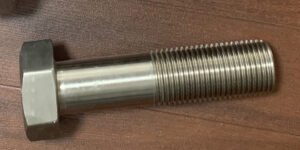Hi, I’m Monica from Hengrui Fastener. I work with clients around the world, helping them choose the right bolts for big projects. One time, I saw a bolt break suddenly on a wind tower in Canada. It didn’t stretch or twist — it just snapped clean across. This was not tension failure. It was shear failure.
Many buyers and engineers ask me, “What does shear failure mean?” Today, I’ll explain it in a simple way — no hard math, just real-world tips that can save your project. If you want to calculate or compare the actual strength of a bolt in shear, check this guide:
👉 Bolt Shear Strength – Calculation and Factors Explained

Shear failure in bolts happens when sideways force (shear stress) becomes too high and cuts the bolt across its body. It’s like scissors cutting paper. This usually occurs when the bolt is overloaded, installed wrong, or used in poor design. Understanding shear failure helps avoid sudden equipment damage.
Let’s look at what shear failure really is, and why it matters to your project or your purchase.
1. What Does “Shear” Mean in Bolts?
Shear is a force that moves things sideways. If a bolt holds two plates together and one plate moves to the left while the other moves to the right, the bolt will get cut in the middle. This is called shear force.
Bolts are strong when pulling (called tension), but not as strong when pushed from the sides. If the sideways force is too big, the bolt will break. This kind of break is called shear failure.
2. How Does Shear Failure Look?
Shear failure is easy to see if you know what to look for. It usually leaves a clean, flat break on the bolt — like someone sliced it with a knife. The break often happens right at the joint where the bolt holds the parts together.
Signs of shear failure:
- The bolt breaks straight across
- No signs of pulling or bending
- The broken surface looks flat and smooth
3. Where Does Shear Failure Happen?
Shear failure often happens in places where bolts face a lot of side-to-side motion or heavy loads. For example:
- Bridges and steel structures
- Wind turbines and towers
- Car and truck chassis
- Machines that shake or move quickly
Shear failure also happens when bolts are not used correctly. For example, if the bolt is placed in a single shear joint (only one surface holds the bolt), the bolt gets more stress and breaks easier. A double shear joint spreads the force better and makes the bolt stronger.
4. Why Is Shear Failure Dangerous?
Because it usually happens without warning. A bolt may look fine from the outside. It’s not rusty. It’s not loose. But inside, shear stress is building up. One day — it snaps.
This kind of break can cause big problems: Machines stop working; Structures fall; People get hurt
That’s why we must take shear failure seriously. Whether you are an engineer, a buyer, or a project manager — knowing about shear failure helps you make safer choices.
Conclusion
Now you know: Shear failure means a bolt breaks sideways from too much side force. It looks clean and happens fast. But with the right design, bolt size, and material — you can stop it from happening.
In the next article, I’ll show you the 6 most common reasons bolts fail in shear, with tips to fix each one. If you want help choosing the right bolt, I’m here for you.
📧 Email: info@hrfastener.com
FAQ – Simple Questions About Shear Failure
Q: Is shear failure the same as tension failure?
No. Shear failure cuts the bolt sideways. Tension failure pulls the bolt lengthwise. They look different and happen for different reasons.
Q: How can I stop shear failure?
Use the right bolt strength, correct joint design, and do not overload the bolt. Ask your supplier to help you choose bolts with high shear strength.
Q: Are some bolts better for shear?
Yes. High-grade bolts (like Grade 8.8 or 10.9) are stronger in shear than normal bolts. Stainless steel is good for outdoor or wet areas but may not be as strong.
Q: What is a double shear joint?
It means the bolt is supported on both sides — like a sandwich. This helps spread the load and makes the bolt stronger. Single shear joints are weaker.






